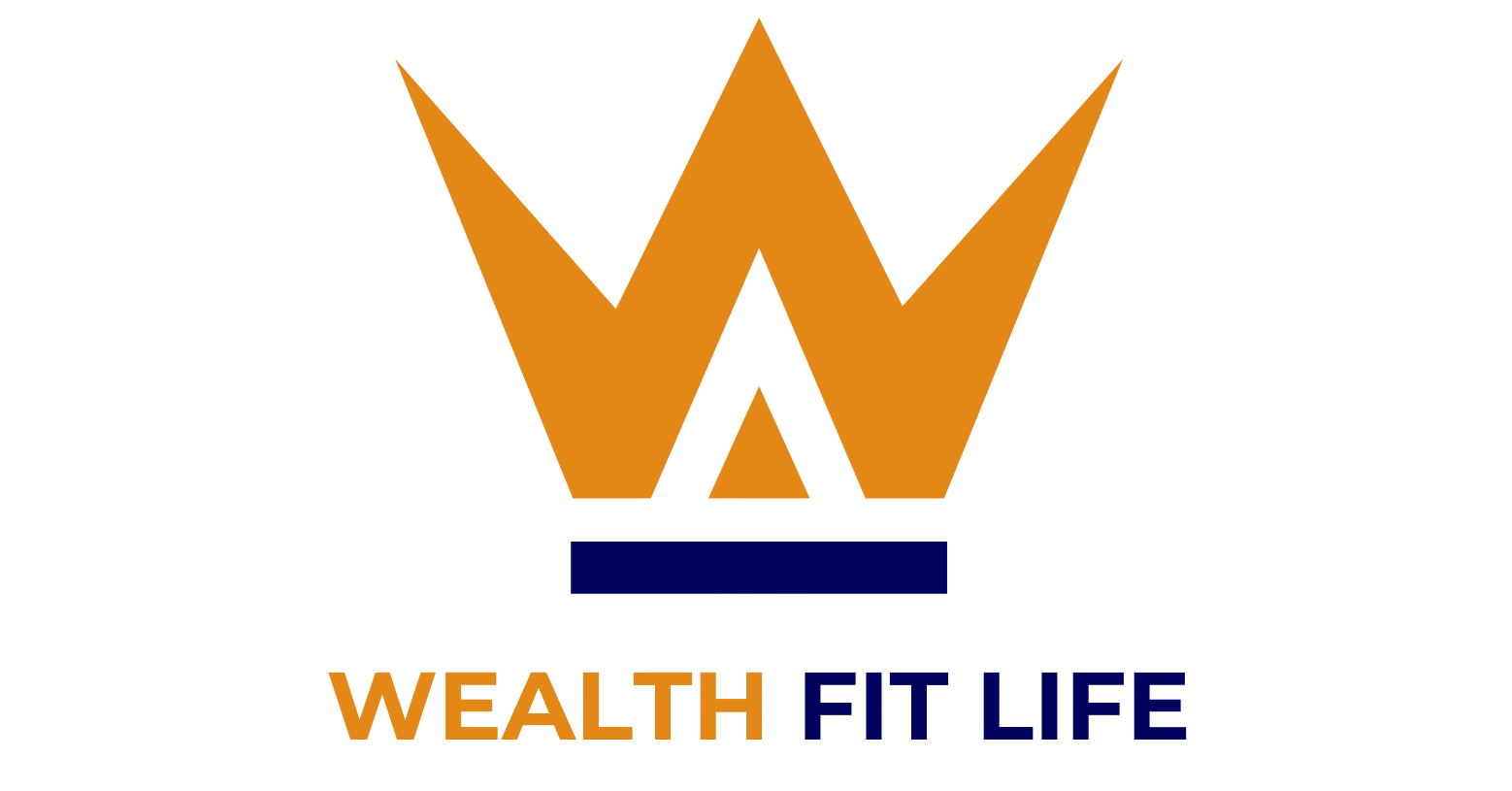Retirement might seem far off, but the earlier you start investing, the better off you’ll be when the time comes. Building wealth for retirement is one of the most important financial goals you can set for yourself. The earlier you start, the more time your money has to grow, and the less pressure you’ll feel when it comes time to stop working.
In this article, we’ll explore key strategies to help you effectively invest for retirement and build wealth for the long term.

1. Start Early and Take Advantage of Compound Interest
The key to building wealth over the long term is starting early. Compound interest allows you to earn interest on your initial investment as well as on the interest that accumulates over time. The longer your money is invested, the more it grows.
For example, if you invest $100 at an annual return of 7%, after 10 years, you’ll have about $196. After 20 years, you’ll have about $386. And after 30 years, you’ll have around $761. The earlier you start, the more you’ll benefit from compound growth.
2. Maximize Employer-Sponsored Retirement Plans
If your employer offers a 401(k) plan or other retirement savings options, it’s important to take full advantage of them. Many employers offer a matching contribution, essentially giving you free money for your retirement. Failing to contribute enough to get the full match is leaving money on the table.
Additionally, contributions to a 401(k) plan are tax-deferred, meaning you won’t pay taxes on the money you contribute until you withdraw it in retirement. This provides immediate tax benefits and allows your investments to grow faster.
3. Consider Individual Retirement Accounts (IRAs)
In addition to a 401(k), you can open an Individual Retirement Account (IRA), which comes in two main types: Traditional IRAs and Roth IRAs. Each has its own benefits:
- Traditional IRA: Contributions are tax-deductible in the year they’re made, and you pay taxes when you withdraw the funds in retirement. This is a great option if you expect your tax rate to be lower in retirement than it is now.
- Roth IRA: Contributions are made with after-tax money, but your withdrawals in retirement are tax-free. A Roth IRA is ideal if you expect to be in a higher tax bracket when you retire.
Both IRA types offer a wider range of investment options than a typical 401(k), giving you more control over your retirement savings.
4. Diversify Your Investments
Diversification is one of the most important strategies in investing. By spreading your investments across different asset classes—such as stocks, bonds, real estate, and commodities—you can reduce risk and enhance long-term returns.
- Stocks: Typically offer higher returns over the long term but come with more short-term volatility. They’re an excellent choice for younger investors with more time to weather market fluctuations.
- Bonds: Provide stability and regular income, but they typically offer lower returns than stocks. They’re an important part of a retirement portfolio as you get closer to retirement age.
- Real Estate & Alternatives: Real estate investments, or alternative assets like commodities, can help further diversify your portfolio and protect against inflation.
The general rule of thumb is to gradually shift your portfolio to more conservative investments (such as bonds) as you approach retirement.
5. Rebalance Your Portfolio Regularly
Over time, the performance of different investments in your portfolio will vary. For example, stocks might outperform bonds for a period, causing your portfolio to become overly weighted in equities. Rebalancing means adjusting your portfolio back to your desired asset allocation to maintain your investment strategy.
Rebalancing should be done at least once a year, but it can also be triggered by significant market changes. Regular rebalancing helps ensure that you’re staying aligned with your long-term retirement goals.
6. Consider Low-Cost Index Funds and ETFs
Index funds and Exchange-Traded Funds (ETFs) are great tools for retirement investors because they offer broad market exposure at a low cost. These funds track major indexes like the S&P 500, meaning you can invest in a diversified group of companies without having to pick individual stocks.
Because index funds and ETFs tend to have lower management fees than actively managed funds, more of your money goes toward your investments rather than to fund managers. Over the long term, these small cost savings can have a significant impact on your returns.
7. Automate Your Contributions
One of the best ways to stay disciplined and grow your retirement savings is by automating your contributions. Setting up automatic monthly contributions to your retirement accounts ensures you’re consistently saving without having to think about it.
Whether it’s a direct deposit from your paycheck into your 401(k) or a monthly transfer to your IRA, automation removes the temptation to spend that extra money instead of saving it for the future.
8. Stay Consistent and Avoid Emotional Investing
Markets will rise and fall over the years, and there will be times when you feel the urge to panic and sell investments during a downturn. However, selling investments based on short-term market movements is usually a mistake. Successful long-term investing is about staying consistent and resisting emotional decisions.
Instead of reacting to market fluctuations, focus on your long-term goals and continue contributing to your retirement funds. By sticking to your plan, you’ll give your investments time to recover and grow.
9. Plan for Healthcare Costs in Retirement
Healthcare costs can be one of the most significant expenses during retirement, so it’s essential to factor them into your investment strategy. Medicare provides coverage for many, but it doesn’t cover everything. Long-term care, prescription drugs, and other medical expenses can add up quickly.
Consider adding a Health Savings Account (HSA) if you’re eligible. Contributions to an HSA are tax-deductible, and the funds can be used tax-free for medical expenses in retirement. An HSA is a great way to save specifically for future healthcare costs while enjoying tax benefits along the way.
10. Review Your Retirement Plan Regularly
Your retirement goals and your life circumstances will change over time. Be sure to review your investment strategy regularly and adjust your plan as needed. Whether it’s rebalancing your portfolio, increasing your contributions, or revising your retirement date, regularly assessing your plan will keep you on track to meet your goals.
Final Thoughts: Building Wealth for the Long Term
Investing for retirement is a long-term commitment that requires patience, discipline, and strategy. By starting early, diversifying your investments, taking advantage of retirement accounts, and staying consistent, you’ll be well on your way to building the wealth you need for a comfortable retirement. The earlier you begin, the more time your money has to grow, and the more secure your future will be. Start today and set yourself up for a financially stable tomorrow!
By following these tips and staying focused on your long-term goals, you can set yourself up for financial success in retirement. Start planning now to ensure you’re ready when the time comes to enjoy your golden years!
Read More:https://wealthfitlife.com/bitcoin-vs-ethereum-which-is-the-better-investment-in-2025/
FAQs
1. What is the best age to start investing for retirement?
- The earlier you start, the better. Ideally, you should start investing for retirement as soon as you begin earning income. Starting in your 20s or 30s allows you to take full advantage of compound interest, but it’s never too late to begin.
2. What are the most common retirement accounts?
- The most common retirement accounts include 401(k)s (employer-sponsored), IRAs (Individual Retirement Accounts), and Roth IRAs. Each offers tax advantages and different rules on contributions and withdrawals.
3. How much should I be saving for retirement each month?
- A general guideline is to save at least 15% of your pre-tax income for retirement. However, the exact amount will depend on your retirement goals, income, and age. The earlier you start, the smaller your monthly contributions need to be.
4. What’s the difference between a Traditional IRA and a Roth IRA?
- A Traditional IRA allows you to make tax-deductible contributions, but you pay taxes when you withdraw the money in retirement. A Roth IRA involves after-tax contributions, but your withdrawals in retirement are tax-free.
5. Should I invest in stocks, bonds, or both for retirement?
- A diversified approach is best. Stocks generally offer higher returns over the long term, while bonds provide stability and income. A balanced portfolio, tailored to your risk tolerance and time horizon, is ideal for retirement investing.
6. How can I take advantage of employer 401(k) matching?
- If your employer offers a 401(k) match, contribute at least enough to get the full match. This is essentially “free money” that can help accelerate your retirement savings.
7. How often should I review my retirement portfolio?
- You should review your retirement portfolio at least once a year. Additionally, review it whenever there are major life changes, such as a change in income, family situation, or retirement goals, or if the market undergoes significant fluctuations.
8. What happens if I withdraw from my retirement accounts early?
- Withdrawing from your retirement accounts before the age of 59½ typically incurs a 10% penalty, in addition to the regular income tax on the withdrawn amount (for Traditional IRAs and 401(k)s). Roth IRAs have more flexibility, but early withdrawals of earnings can be subject to penalties and taxes.
9. How can I plan for healthcare costs in retirement?
- Healthcare can be a major expense in retirement, so it’s important to factor it into your planning. Consider a Health Savings Account (HSA) if you’re eligible, and understand the coverage provided by Medicare. Additionally, consider long-term care insurance as a potential safeguard.
10. What’s the best investment strategy for retirement?
- The best strategy depends on your individual goals, risk tolerance, and time horizon. A diversified mix of stocks, bonds, and alternative investments (like real estate) is typically recommended. As you get closer to retirement, it’s smart to gradually reduce risk by shifting toward more conservative investments.
